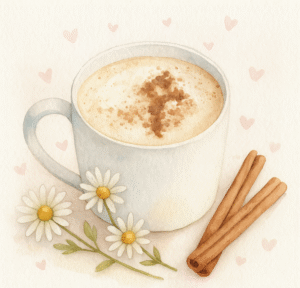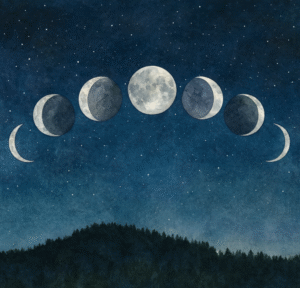How To Dry Herbs
a slow, sacred ritual for witches, tea-lovers, and kitchen alchemists
Drying herbs might seem simple, but when you do it intentionally, it becomes a whole ritual. It’s not just about preserving flavor but about preserving energy. You’re bottling the sunlight, the soil, and the spell that lives in the plant.
I dry herbs for tea, spellwork, baths, tinctures, and sometimes just because they look beautiful hanging in my kitchen like soft green chandeliers. So if you’re growing your own or picking some up fresh, here’s how I do it, step by step.
Start With The Right Herbs
Air-drying works best for low-moisture herbs like:
- Rosemary
- Marjoram
- Dill
- Oregano
- Sage
- Thyme
- Lavender
- Lemon balm
- Mint (yes, but dry in small bunches or it’ll mold)
High-moisture herbs like basil or chives are trickier to air-dry and can turn slimy. You’re better off drying those in a dehydrator or turning them into pesto, oil, or tinctures right away.
Harvesting with Care
Harvest in the morning, after the dew has dried but before the sun gets too strong. That’s when the oils and scent are at their peak.
Always trim at an angle, especially if you’re harvesting from a plant that will keep growing. It protects the plant and allows it to heal cleanly.
You can say a little thank-you or blessing while you snip. I usually whisper something like:
“Thank you for your medicine. I’ll use you with care.”
Bundling Your Herbs
Gather 5 to 10 stems per bundle. Not too thick or they won’t dry evenly. Strip the bottom few inches of leaves from the stems so they don’t rot or mold when you tie them.
Use cotton string, twine, or even a rubber band if you don’t have anything else. Make sure it’s tight, because the stems will shrink as they dry.
Hang them upside down, stem-side up, with the leafy parts hanging down.
Choose a Cool, Dark Space
Herbs dry best when they’re away from sunlight. Sun can bleach out color and burn off scent.
Pick a cool, dry place with good air flow. I hang mine near my pantry in little clusters from a wooden dowel. You can also use a curtain rod, a nail on the wall, or a ceiling hook. If you’re fancy, make a little drying rack with clothespins.
They usually take a week or more to fully dry. You’ll know they’re ready when the leaves feel crispy and crumble easily between your fingers.
How I Store My Dried Herbs
Once dried, I crumble them by hand (slowly, intentionally) and store them in airtight glass jars. You can use old spice jars, mason jars, or even tea tins. Label them with the name and date so you remember what’s inside.
Keep them out of direct light and heat so they last longer.
What I Use Dried Herbs For
Here’s where it gets fun. Dried herbs become your little witches’ apothecary. I use them for:
- Teas: chamomile, lemon balm, lavender, rosemary
- Baths: rose, calendula, mint, thyme
- Smoke cleansing: rosemary, lavender, mugwort
- Cooking: oregano, sage, thyme, dill
- Spellwork: bay leaf, basil, rosemary, cinnamon sticks
- Decor: hanging bundles, dried flower crowns, altar jars
- Infused oils: calendula, rosemary, chamomile
Sometimes I’ll even make little herbal charm bags to carry in my bag or keep under my pillow. A blend of rosemary and lavender is perfect for protection and sleep.
Quick Tips
- Check for mold during the first few days. If anything feels damp or smells off, toss it.
- If you live in a humid place, try using a paper bag with holes punched in it. Place the bundle inside and hang the bag. It helps airflow and keeps dust off.
- Want stronger flavor or scent? Don’t crush the herbs until you’re ready to use them. Whole leaves hold their oils better.
Final Thoughts
Drying herbs is slow magic. It makes you pause, it connects you to the rhythm of the seasons, the pulse of the Earth, and the quiet knowing of your own body.
Whether you grow them or buy them fresh, treat them with intention. Hang them gently, bless them softly. And when you sip that tea or sprinkle those leaves in your spell jar, you’ll feel i… that deep, ancient kind of peace ♥
Start with one herb. See how it feels. Let it become part of your rhythm.
Your home can smell like a garden. Your shelf can look like an apothecary. Your rituals can be this simple.








